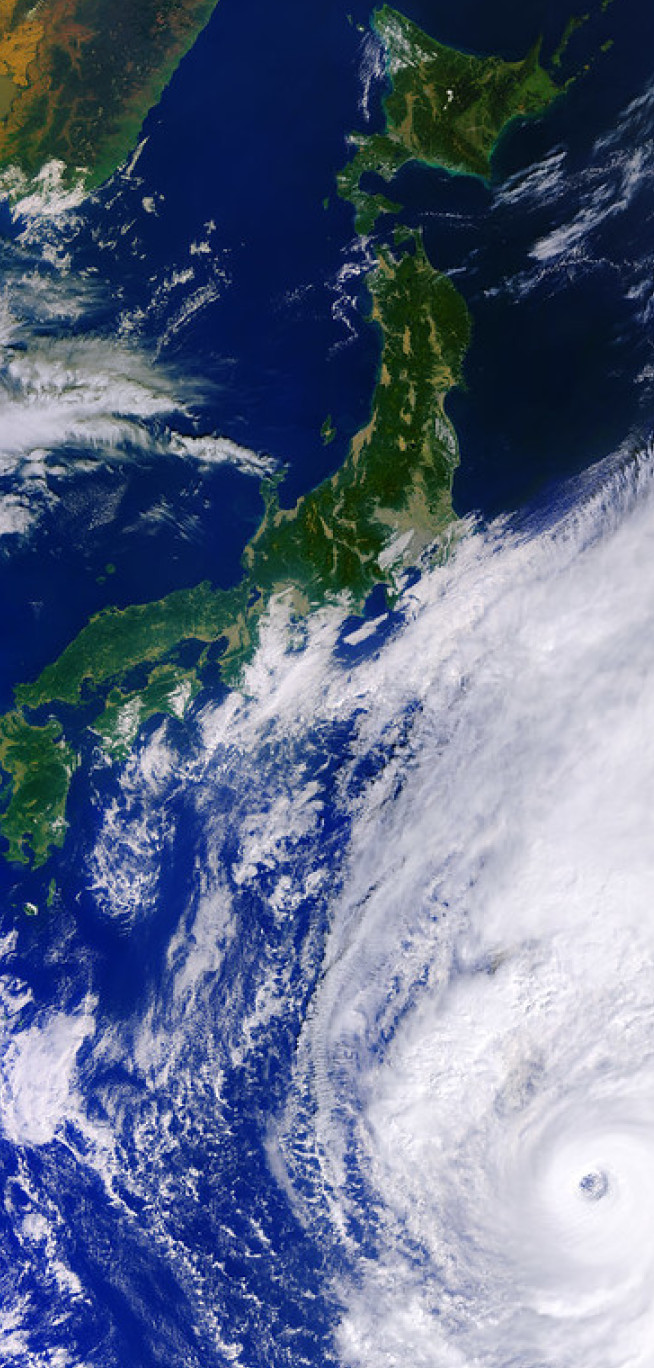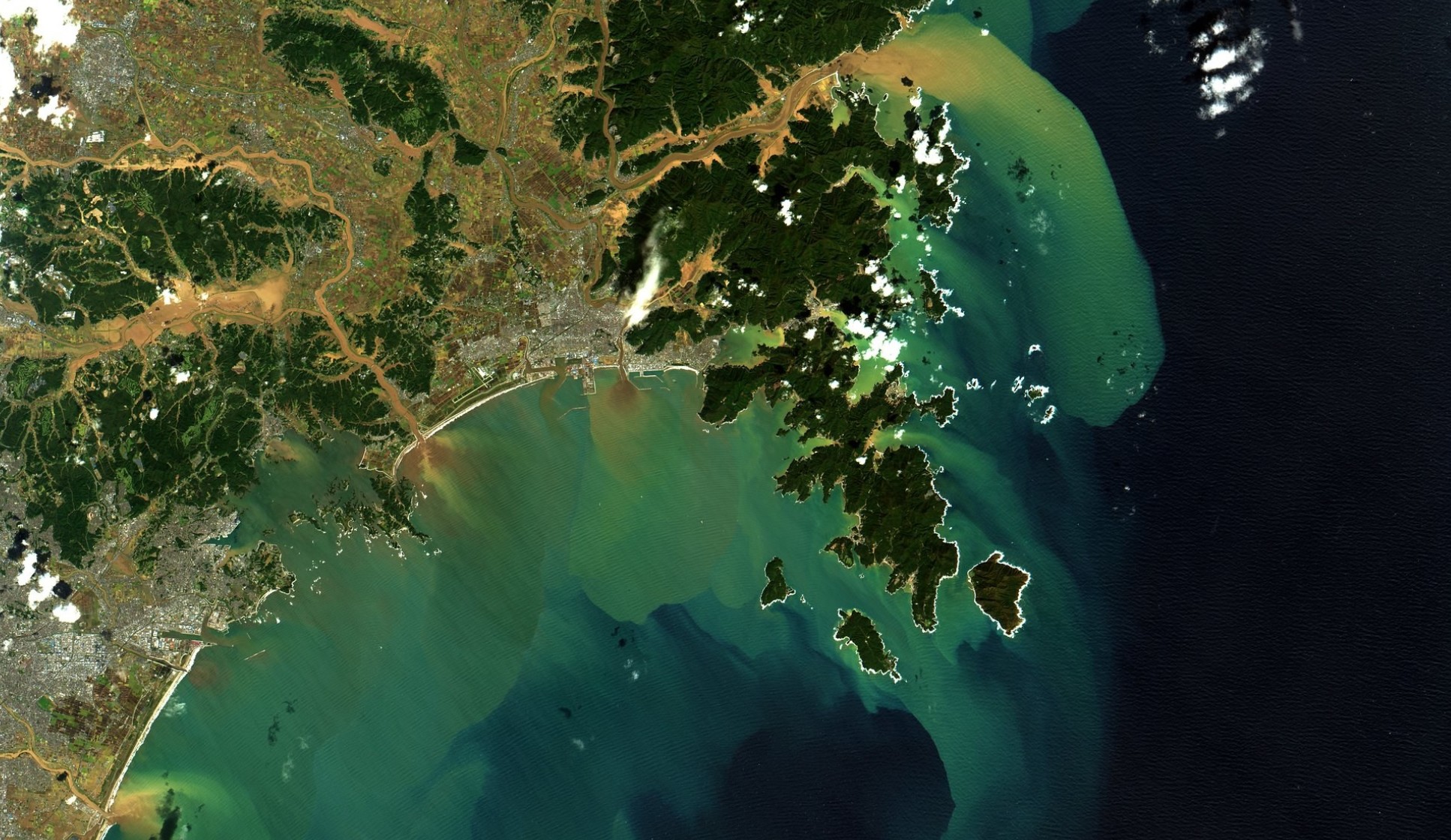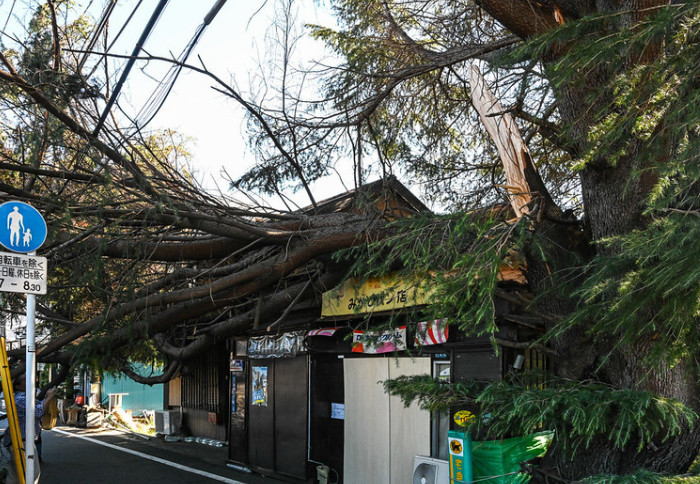
A new study calculates the extent to which damage from individual extreme weather events can be attributed to human-induced climate change.
The extreme rainfall that hit Japan during Typhoon Hagibis in October 2019 was made 67% more likely by human-induced climate change, according to an analysis by scientists from Imperial College London and the University of Oxford.
The study, published in the peer-reviewed journal Climate changealso found that this increase in rainfall meant that $4 billion of storm damage could be attributed to climate change.
Typhoon Hagibis was one of the most devastating storms in Japanese history.

More than 240mm of rain fell in the Tokyo area on October 12, 2019 – the highest since reliable records began in 1976 – killing around 100 people and causing widespread destruction that made it the second costliest typhoon ever. recorded in the Western Pacific.
To quantify the effect of climate change on this extreme rainfall, the scientists – led by Dr Friederike (Fredi) Otto, Grantham Institute Lecturer – Climate Change and Environment at Imperial College London and Dr Sihan Li, a senior research associate at the University of Oxford – analyzed observations of extreme rainfall during Typhoon Hagibis using records from weather stations operated by the Japan Meteorological Agency to characterize the event.
They then compared the rarity of this event in computer simulations of the climate as it is today, with more than 1°C of global warming, with the likelihood of such an event in the climate as it would have been without human influence, using the same methods as in the past peer-reviewed event attribution studies.
Their analysis found that human-caused climate change increased the likelihood of extreme rainfall on October 12, 2019 by about 67%, reflecting the fact that a warmer atmosphere can hold more moisture, meaning storms like Typhoon Hagibis have the potential to bring more rain as global temperatures rise.
Scientists have also calculated that $4 billion of the $10 billion in insured damage caused by rainfall can be attributed to climate change.

Dr Sihan Li, Senior Research Associate at Oxford University, co-author of the study, said: “Failing to act on climate change will cost far more than cutting emissions and adapting. to a warmer world. We are already seeing the costs of actions taken to reduce emissions in the past, and the sooner net emissions are eliminated, the less damage caused by climate change will be. »
This is the first study, for any extreme weather event in Japan, to calculate the damage attributed to climate change, and may underestimate the influence of climate change, as extreme rainfall observed in Japan increased more than simulate climate models.
The results reflect the growing economic burden that Japan – and other countries – already face due to climate change and will increasingly bear if emissions are not quickly eliminated: the “costs of inaction”. “.
The study examines to what extent climate change has increased damage from a single extreme event, but as temperatures rise Japan is hit by an increasing number of extreme heat waves and heavy rains (external link – PDF). With slow action to reduce emissions and limit further warming, these events and their economic burden would likely become heavier.

Dr Friederike (Fredi) Otto, Senior Lecturer at the Grantham Institute – Climate Change and the Environment at Imperial College London, Head of World Weather Attribution and co-author of the study, said: “The negative consequences of the continued burning of fossil fuels is now evident and can also be felt in wealthy countries like Japan.Storms like Hagibis have become more dangerous and destructive due to climate change, while other research has shown that the surge 2018’s deadly heat wave could not have happened without climate change. If it drastically reduces its consumption of oil, gas and coal, the impacts of human-caused climate change will continue to worsen.”
Over 400 past extreme weather attribution studies examined the extent to which climate change makes extremes more significant or more likely and the methodology used in the report was endorsed by the United Nations Intergovernmental Panel on Climate Change in its Sixth Assessment Report.
Other peer-reviewed studies have also calculated the financial damages attributable to climate change in particular extreme events, using the same methodology as in this study, for example a Hurricane Harvey studywhich hit Texas in 2017 found that $67 billion in damage could be attributed to climate change.




